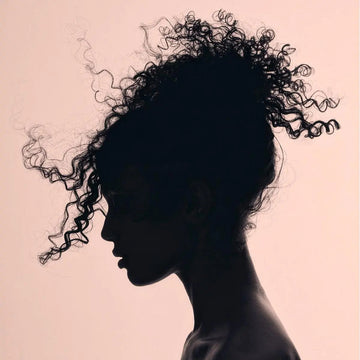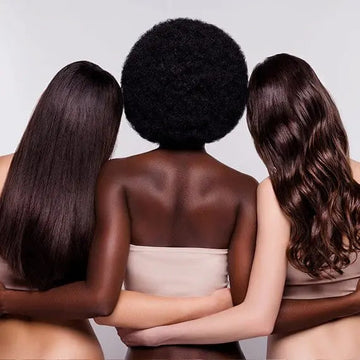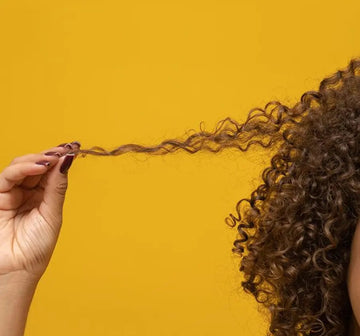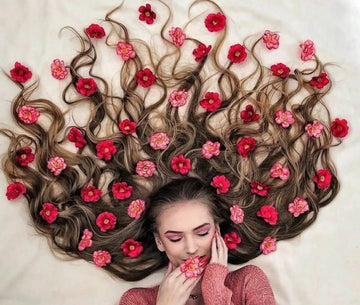Satin Bonnet vs. Silk Bonnet: Why Yanibest Butter Satin Wins for All Hair Types
par X.Ruochen sur Aug 15, 2025
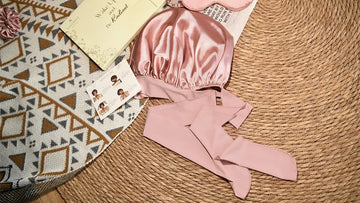
1. Satin Bonnet vs. Silk Bonnet: From Tradition to Modern Hair Care
For centuries, bonnets have been used for style, modesty, and hair protection. While silk bonnets are admired for their luxurious feel, they require delicate hand washing and are prone to wear. Satin bonnets, especially those made from high-quality synthetic fibers, deliver a silk-like smoothness but with enhanced durability and easy maintenance. Today, the evolution from silk vs satin bonnets has made protective hair care more accessible—bringing the comfort of silk with the practicality of modern satin.
Microscopic view of textile fibers under SEM—fibers are closely packed and intertwined, illustrating how satin weaves form smooth, continuous surfaces with long floats.
Source: ESA - Microscopic view of textile
2. What Makes Yanibest Butter Satin Bonnet Different
Butter Satin™ is YANIBEST’s exclusive satin weave fabric, designed for people looking for the best satin bonnet for curly hair, straight hair, or protective styling. It is crafted from long-filament fibers in a 20+ denier weave, giving it a surface as smooth as premium silk but with the strength of advanced synthetics. The breathable, oil-resistant construction makes the Yanibest Butter Satin Bonnet ideal for overnight hair protection, whether you’re preventing frizz, keeping braids neat, or reducing breakage.
3. Hair Health Science: Why Butter Satin Outperforms Other Fabrics
The secret to healthier hair lies in low moisture regain and low fabric friction. Cotton can absorb up to 8.5% of its weight in water, and silk about 11% [1], meaning they can pull hydration from your hair overnight. Butter Satin Bonnets have only ~4% moisture regain, which helps lock in natural oils. Independent tests also show that cotton has the highest friction, while satin and silk bonnets are far gentler on hair strands [2]. The Butter Satin Bonnet offers the glide of silk with the resilience of modern fibers—reducing breakage, frizz, and tangles even after a full night’s rest.
Illustration of a hair strand with open cuticle scales—visible gaps and lifted scales cause moisture loss and rough texture, highlighting why satin (low-friction contact) is gentler on hair.
Source: Image by Mosterpiece on Vecteezy
4. Why Quality Matters in a Satin Bonnet
Not all satin bonnets are created equal—many low-quality options are single-layered, use rough stitching, or contain harsh dyes that can irritate the scalp. Choosing a well-made bonnet like Yanibest Butter Satin Bonnet ensures lasting comfort, safe materials, and real protective benefits.
Butter Satin vs. Other Fabrics: Hair Care Performance
|
Feature |
YANIBEST Butter Satin Bonnet |
Cotton Bonnet |
100% Silk Bonnet |
|
Vegan & Animal-Free |
✅ Yes |
✅ Yes |
❌ No |
|
Moisture Regain [1] |
Low (~4%) preserves hydration |
High (~8.5%) absorbs hair moisture |
High (~11%) absorbs some moisture |
|
Friction Level [2] |
Low – reduces tangles & breakage |
High – can cause frizz & damage |
Very Low – excellent protection |
|
Softness & Feel |
Silk-like (22 momme equivalent) |
Crisp, textured |
Naturally ultra-smooth |
|
Durability & Care |
Machine-washable, long-lasting |
Easy care |
Delicate – hand wash only |
|
Best For |
All hair types, protective styling |
Budget short-term wear |
Luxury users |
Cheap satin bonnets may look similar but fail in performance. Poor stitching can cause scalp irritation, thin single-layer designs offer little protection, and harsh dyes can damage hair or skin. A high-quality Yanibest satin bonnet uses gentle fabrics, sturdy double layers, and breathable construction to deliver genuine benefits night after night.
5. Butter Satin Benefits Go Beyond Curly and Textured Hair
While satin bonnets are often associated with protecting curly and textured hair—a tradition rooted in cultural hair care practices—they actually benefit all hair types and genders. The smooth surface can:
● Reduce hair breakage for people with thinning hair or hair loss concerns.
● Help preserve hair color for those with dyed or chemically treated hair.
● Maintain shine and reduce dryness for straight, wavy, or curly hair.
6. Butter Satin is Perfect for Men, Women, and Every Hair Style
Whether you need a men’s satin bonnet for sleeping, a women’s bonnet for long hair, or a hair bonnet for protective styles, Yanibest Butter Satin Bonnets keep hair healthier and styles fresher.
From tightly coiled curls to fine straight strands, every hair type benefits from reduced friction and balanced moisture retention. The smooth, low-absorbent weave of Yanibest Butter Satin Bonnet preserves natural oils, minimizes tangles, and keeps hairstyles fresh overnight.
Its vegan, cruelty-free design adds the benefit of ethical sourcing without compromising performance—offering comfort, durability, and style in one. Whether you’re preserving braids, guarding against frizz, or simply enjoying a softer night’s sleep, a well-made satin bonnet—originated from centuries of hair care tradition—brings big benefits for everyone.
More on Satin Bonnet Care & Styling
- Is a Bonnet Bad for Your Hair? Learn the History of Bonnets → What Is a Satin Bonnet? History, Origins, and How It Evolved into a Hair Care Essential
- Benefits of Sleeping in a Bonnet and How to Wear a Bonnet for Sleep → Benefits of Sleeping in a Bonnet: How to Wear a Satin Bonnet the Right Way
- Can Wet Hair Go in a Bonnet for Sleeping → Can I Sleep in a Satin Bonnet with Wet Hair? Expert Guide to Satin Sleep Caps & Healthy Hair
- Compare Silk and Satin Bonnet for Hair Protection → Satin Bonnet vs. Silk Bonnet: Why Yanibest Butter Satin Wins for All Hair Types
- How to Wash Your Satin Bonnet → Expert Advice on Satin Bonnet Care: How to Wash and Protect It for Long-Term Use
Discover Yanibest Butter Satin Bonnet Collection and find the style that works best for you—because great hair starts with the care you sleep in.
References
[1] ASTM International. 2016. Standard Tables of Commercial Moisture Regains and Commercial Allowances for Textile Fibers. ASTM D1909-16. West Conshohocken, PA: ASTM International. https://doi.org/10.1520/D1909-13R20E01
[2] Suganuma K, Itagaki M, Kawada E, Sasaki Y, Takemoto M. Factors affecting fabric slipperiness. Textile Research Journal. 2019;90(1):63-75. https://doi.org/10.1177/0040517519858757

